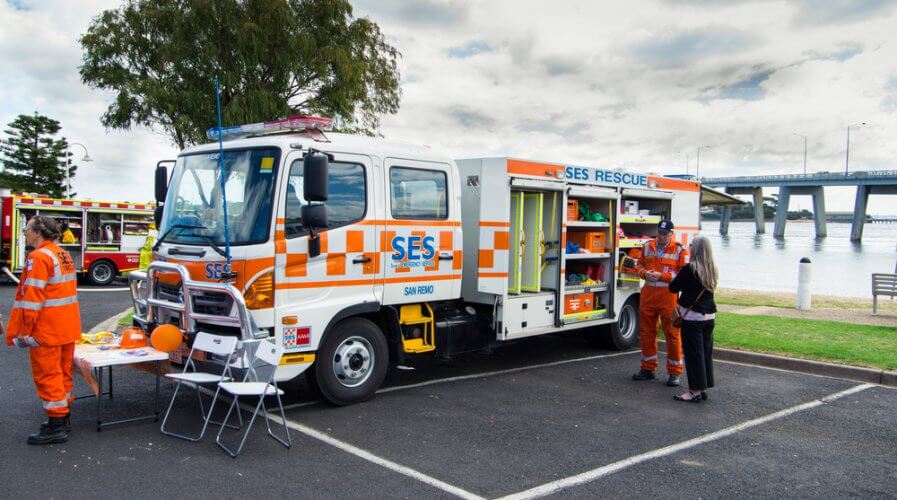
Victoria in Australia is a pioneer of technology says its Commissioner to Southeast Asia. Source: Shutterstock
An Australian perspective on tech and talent in Southeast Asia
TECHNOLOGY is booming in Southeast Asia and regulators and companies in the region are working hand in hand to ensure they continue to grow and succeed in the competitive global marketplace.
Although the region has some barriers, it seems as though businesses are delivering on the promises they’ve made to customers in Southeast Asia and across the world.
In an exclusive interview with Government of Victoria, Australia’s Commissioner to Southeast Asia Brett Stevens, Tech Wire Asia gains a fresh perspective on how technology and technology talent is doing in the region.
“Southeast Asia is a very large region and the various governments are all implementing Industry 4.0 policies to ‘modernize’ and ‘digitize’ their respective economies.”
According to Stevens, delivering high-speed internet connectivity, particularly in rural areas, encouraging a tech start-up culture, and supporting smart cities are some great initiatives in the region.
What’s most exciting, however, is that everyone is looking towards ‘smart’ technologies to enhance coordination and increase efficiencies.
“The internet of things (IoT), cloud, cybersecurity, artificial intelligence (AI) and big data analytic tools are some of the new technologies being deployed in the region. And new technologies have the potential of increasing business efficiency,” said Stevens.
For instance, with IoT tech, the deployment of preventive maintenance and system upgrades can be automated.
Through the use of sensors in connected devices and systems, any error and malfunction can be detected and resolved in real-time, hence decreasing troubleshooting time.
The data collected can also provide businesses with insights on the performance of these devices and systems to improve overall productivity.
Demand for compliance technology such as big data analytic tools is also growing, according to a compliance risk study cited by Stevens.
“Its potential in reducing operating cost and enhancing efficiency, and the lack of talent in the compliance field, have driven organizations to turn to compliance technology.
“With the aid of insights provided by analytics, compliance professionals can identify anomalies from the huge amount of data available and focus on tackling the more complex issues.
“While businesses may be slow in adopting these emerging technologies, they will eventually embrace them and harness their potential in increasing their efficiency and productivity,” Stevens explained.
Nurturing and grooming tomorrow’s technology talent
Talent shortage, especially in the technology industry, is a worldwide problem.
In fact, on several occassions, businesses in Southeast Asia — in Singapore, Hong Kong, Malaysia and neighboring countries — have expressed that the lack of available talent is a major hindrance to their digitial transformation efforts.
“Victoria is fortunate that we have an excellent educational system. In 2017, there were 28,240 enrolments in university ICT courses in Victoria, representing 34 percent of national enrolments, the highest among Australian states.
“Victoria also produces more university ICT graduates than any other states (36 percent). This certainly helps in meeting the high demand for ICT professionals, as well as facilitating the adoption of new technologies in the state.”
Based on experience at home, Stevens believes that regulators in the region must facilitate upskilling programs to mitigate the talent shortage of IT professionals, and consequently enable the adoption of new technologies.
“Just taking Indonesia as an example, the government aims to support eight million SMEs in their digitalization effort by 2020.
“The initiative includes the government’s coordination of training sessions, which are conducted by industry players, to help SMEs in their digitalization journey.”
Being the Government of Victoria, Australia’s Commissioner to Southeast Asia, Stevens pointed out that although there’s plenty of talent and technology back home in Victoria, with businesses generally pioneering new technologies, “the challenge for our businesses is the need to export our tech as Australia is a small market”.
“Fortunately, Southeast Asia’s large population and increasing appetite for new technologies provide our businesses with excellent opportunities to tap into.”
Overall, Stevens believes that Southeast Asia is on the path to success in the digital era, but needs more proactive support from regulators and more initiative in terms of collaborations from businesses in order to accelerate its journey with technology.
READ MORE
- Ethical AI: The renewed importance of safeguarding data and customer privacy in Generative AI applications
- How Japan balances AI-driven opportunities with cybersecurity needs
- Deploying SASE: Benchmarking your approach
- Insurance everywhere all at once: the digital transformation of the APAC insurance industry
- Google parent Alphabet eyes HubSpot: A potential acquisition shaping the future of CRM






